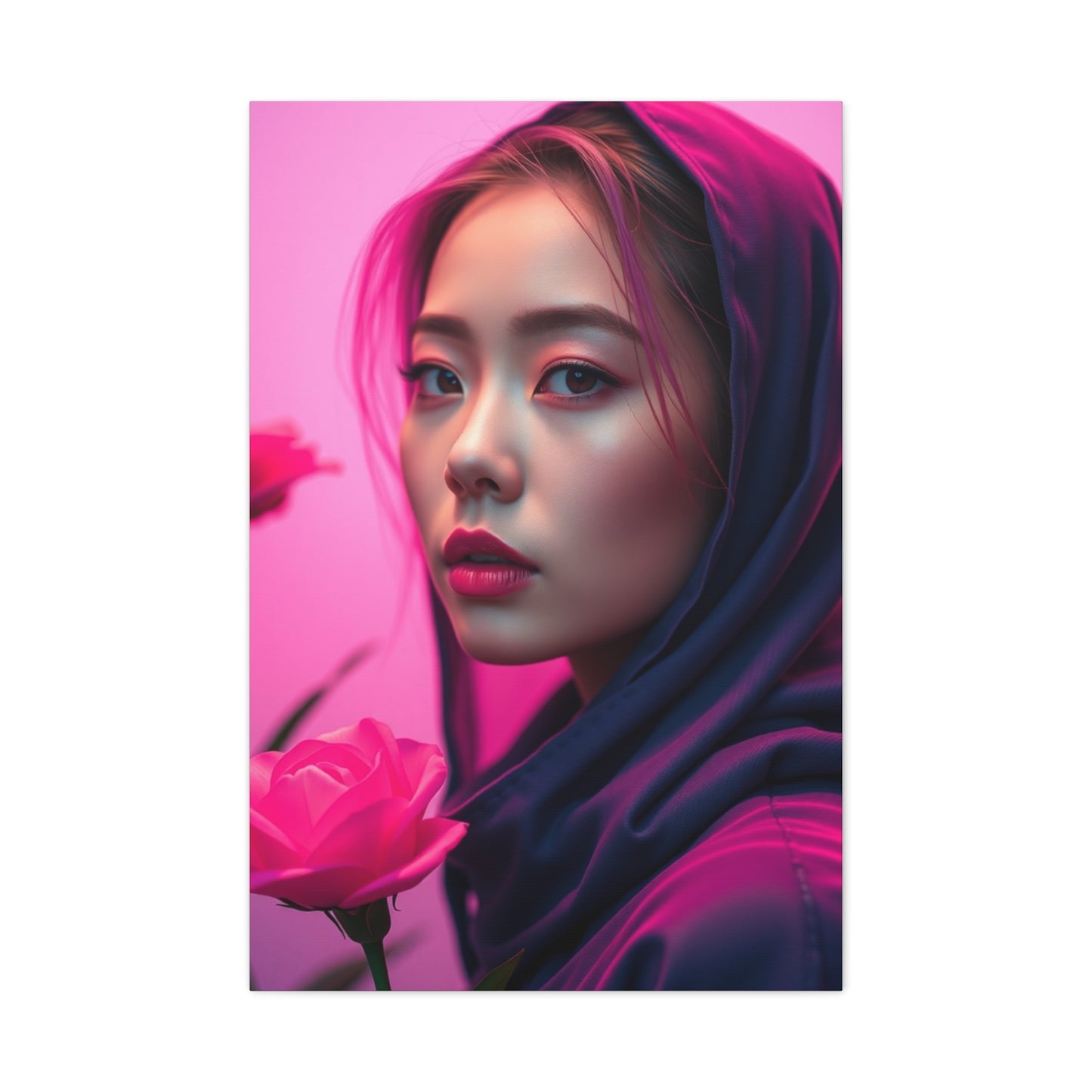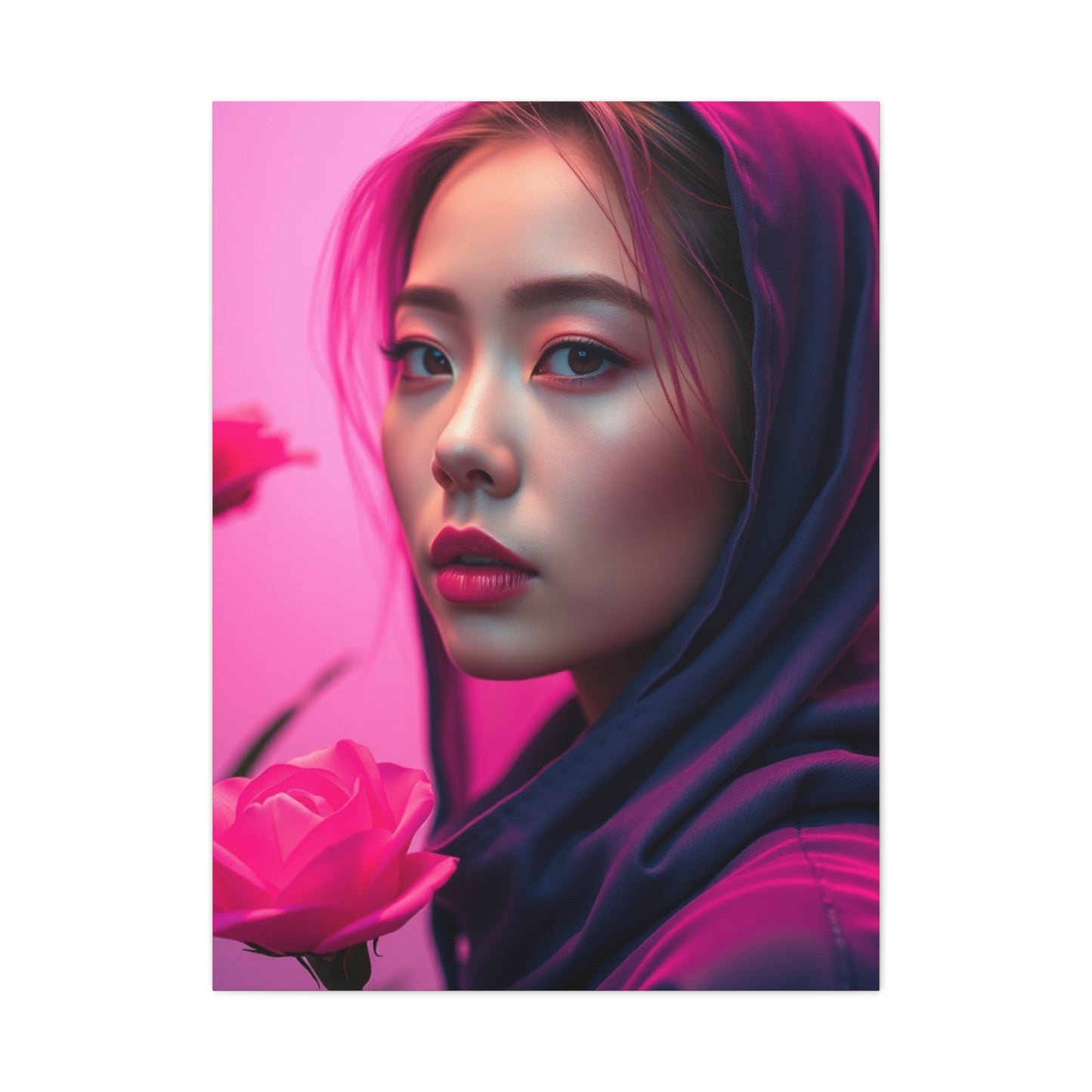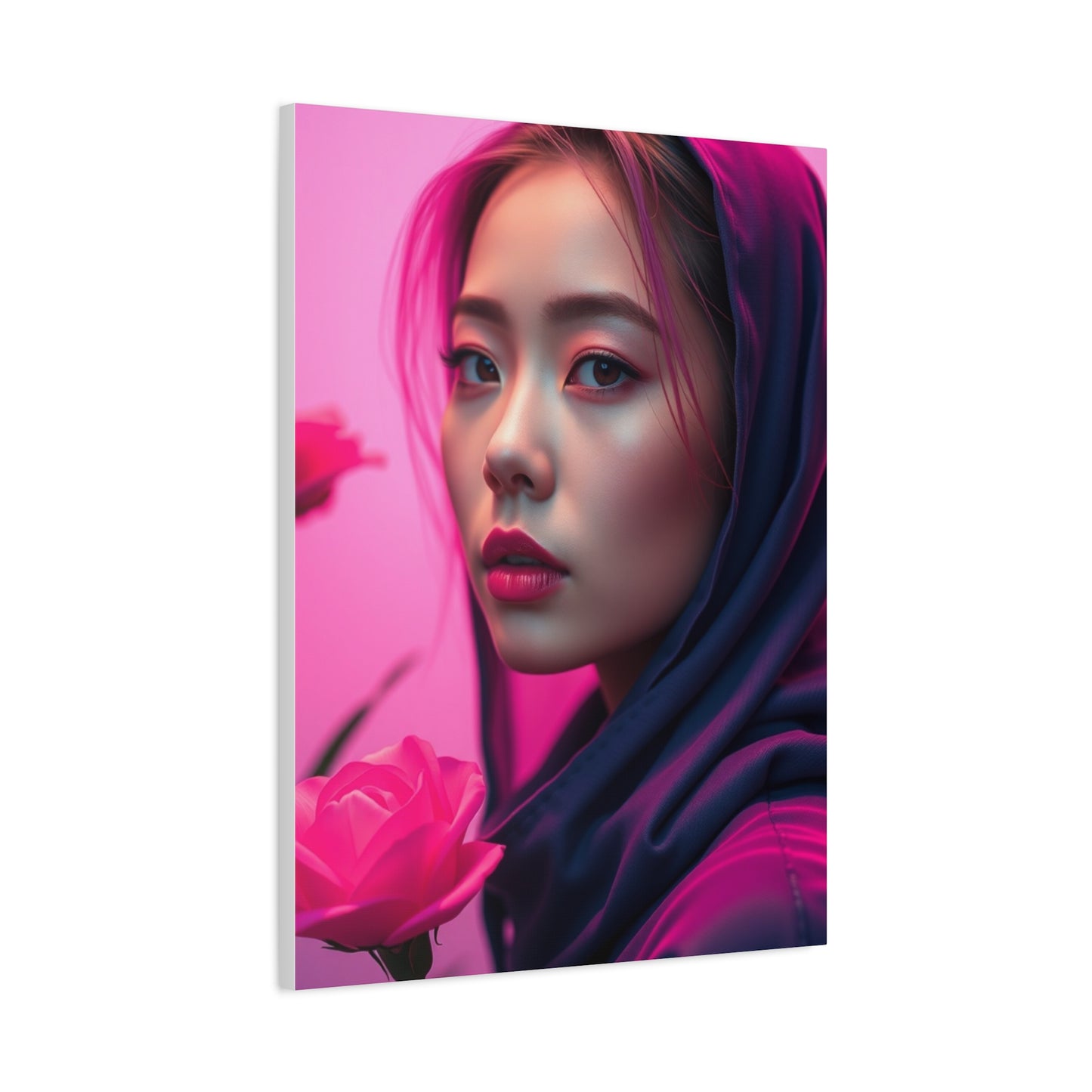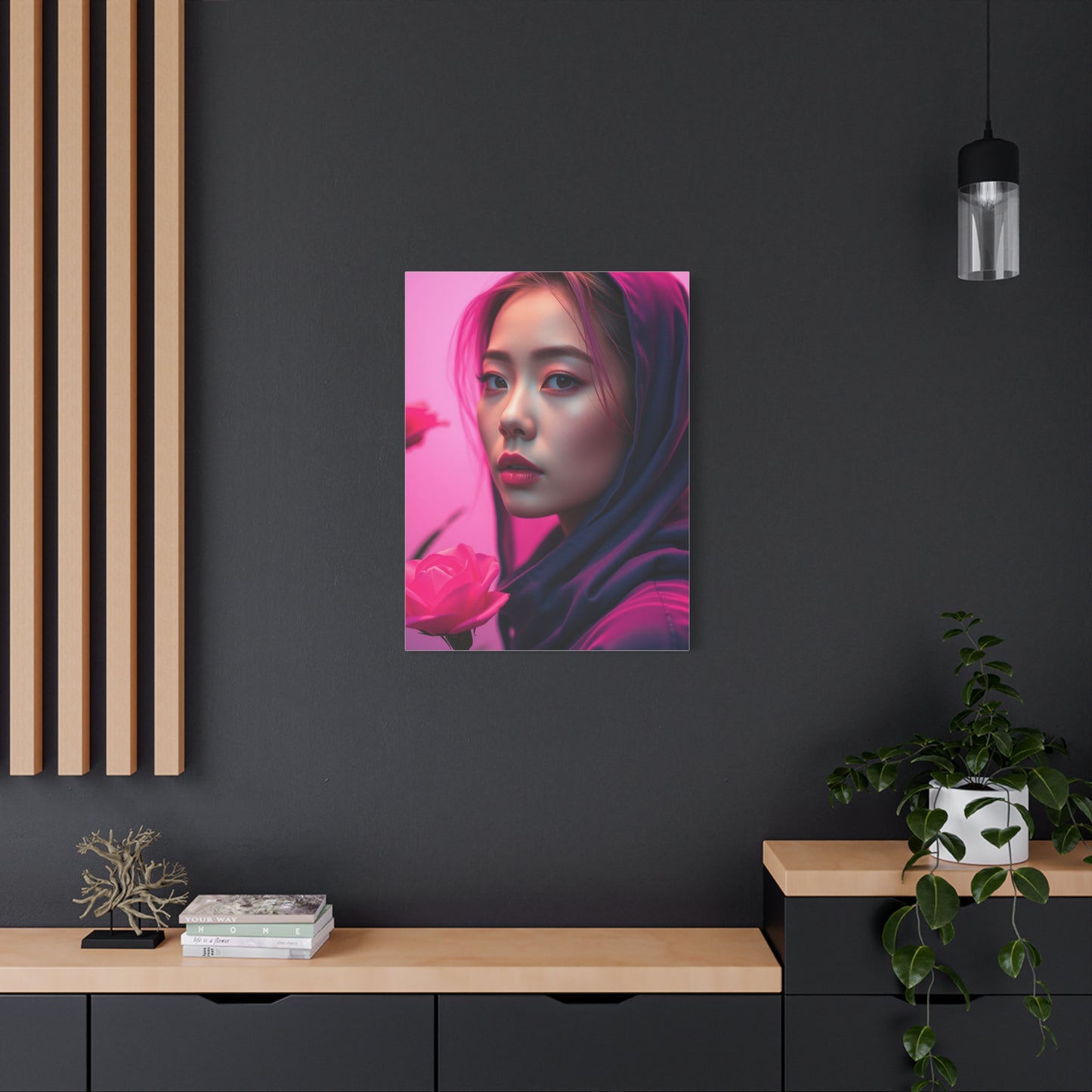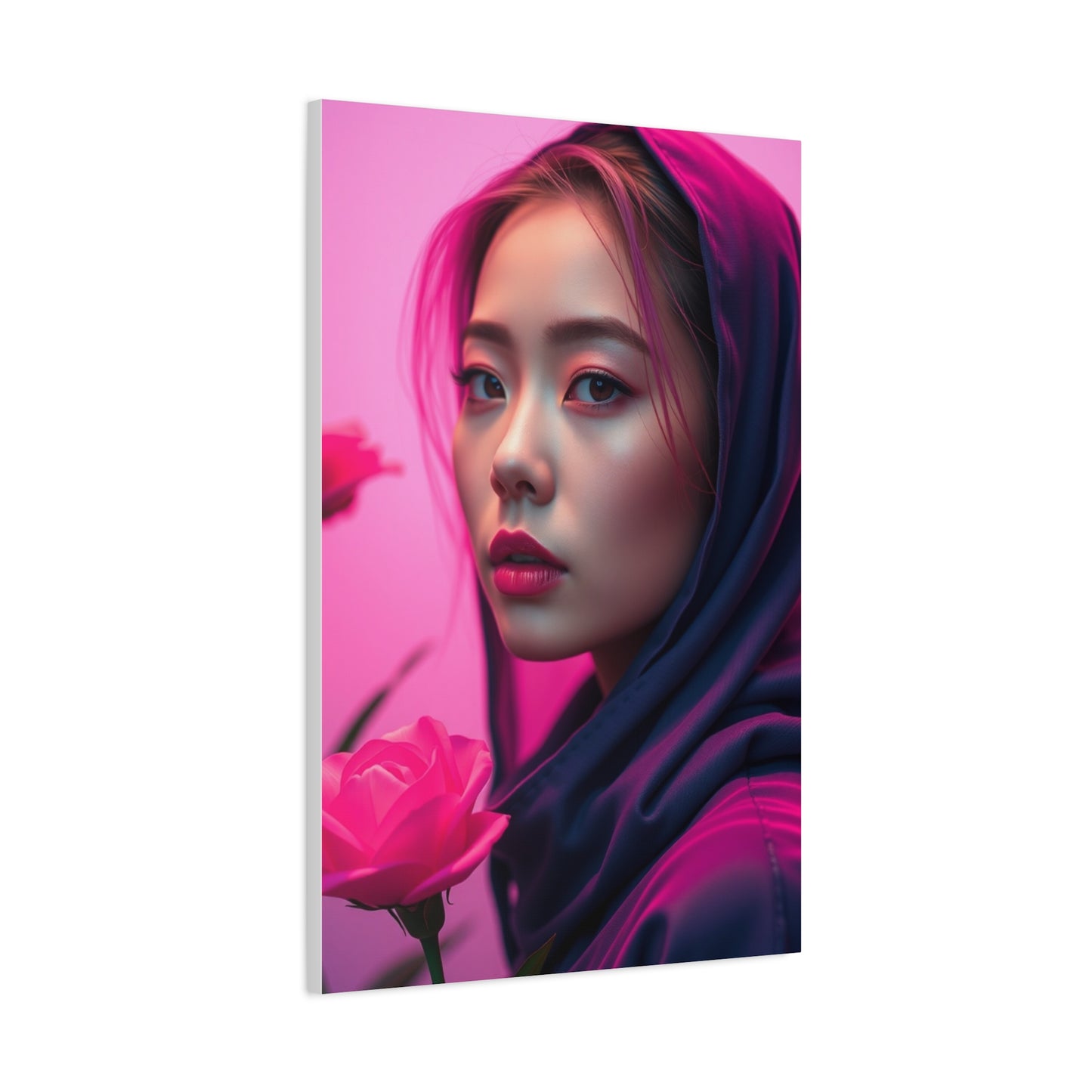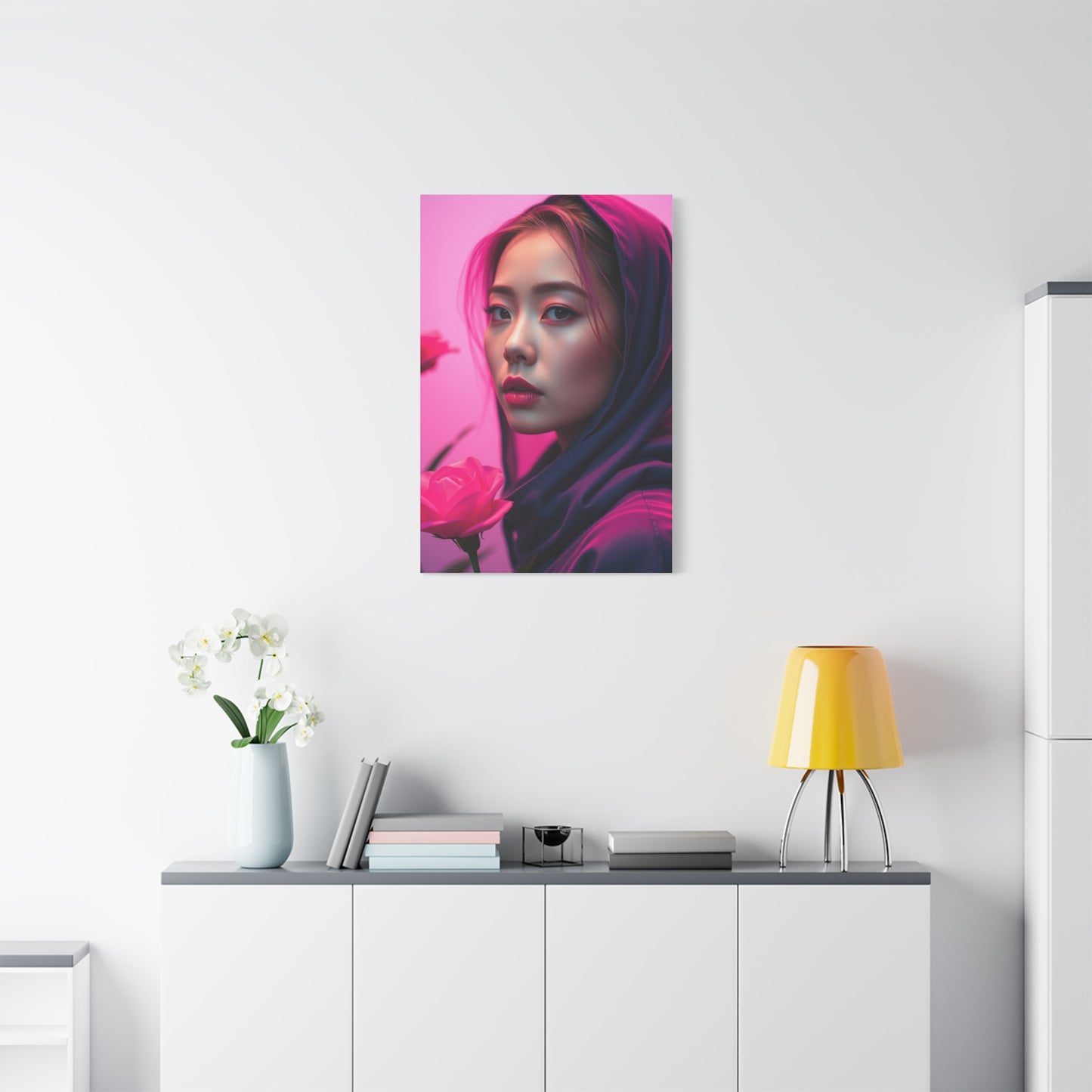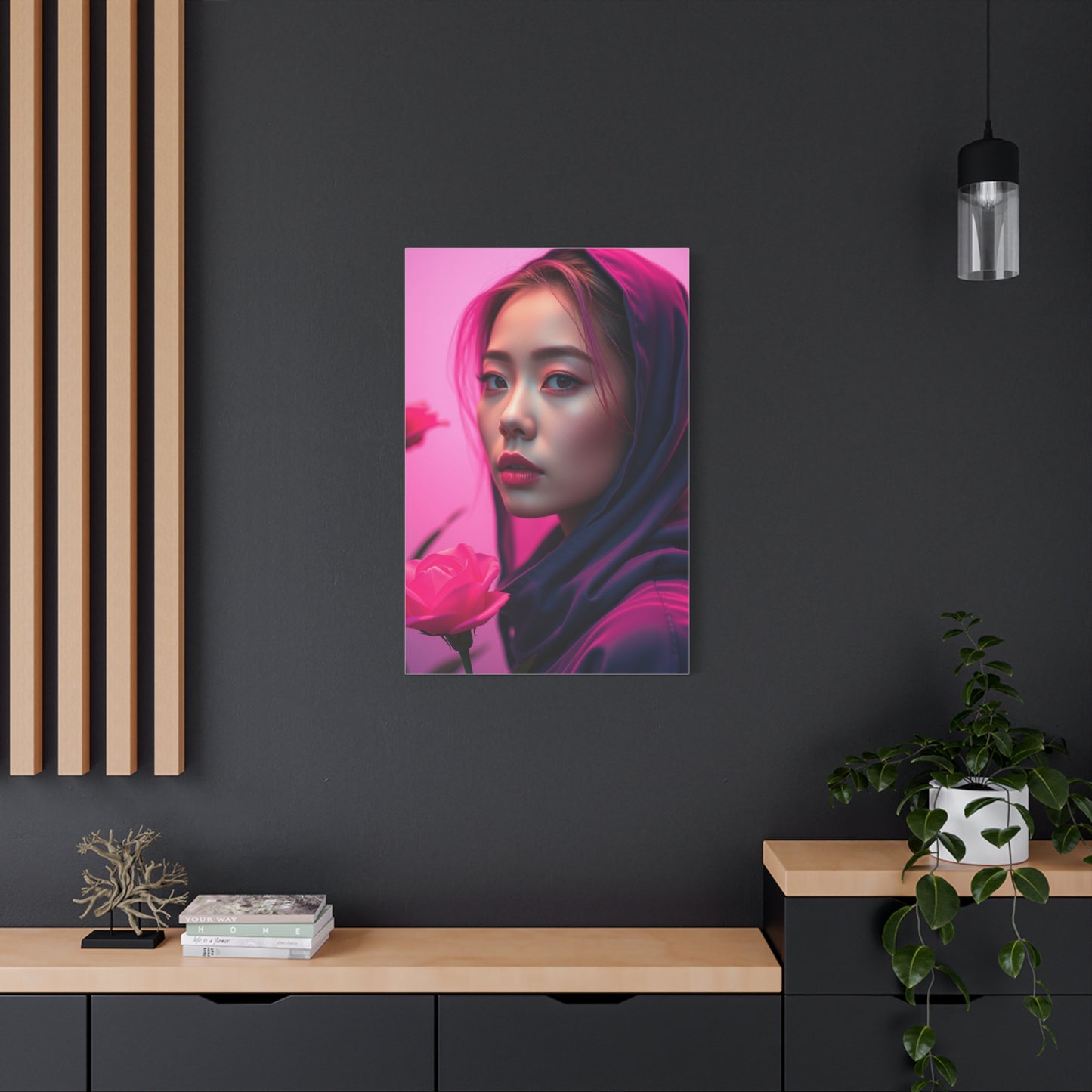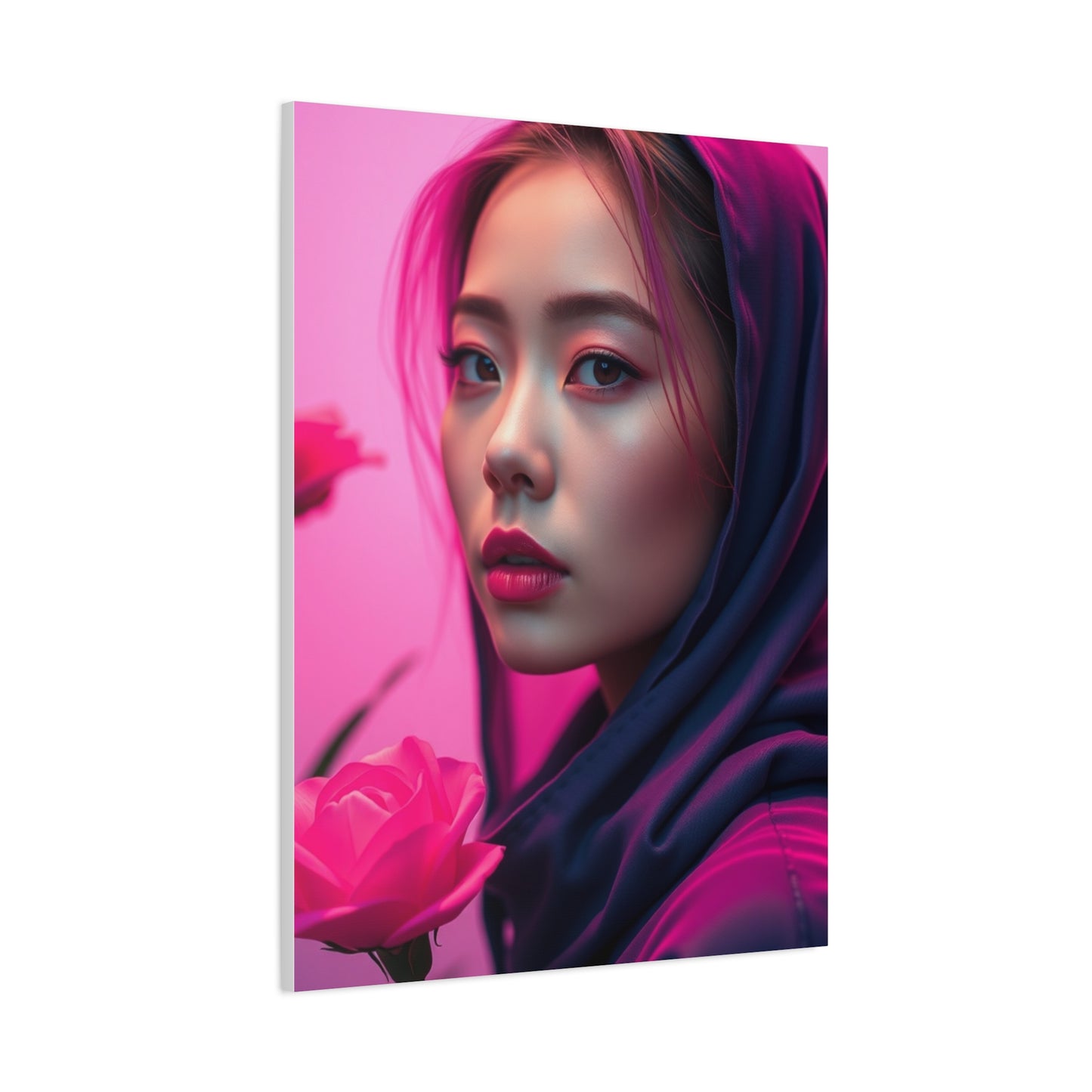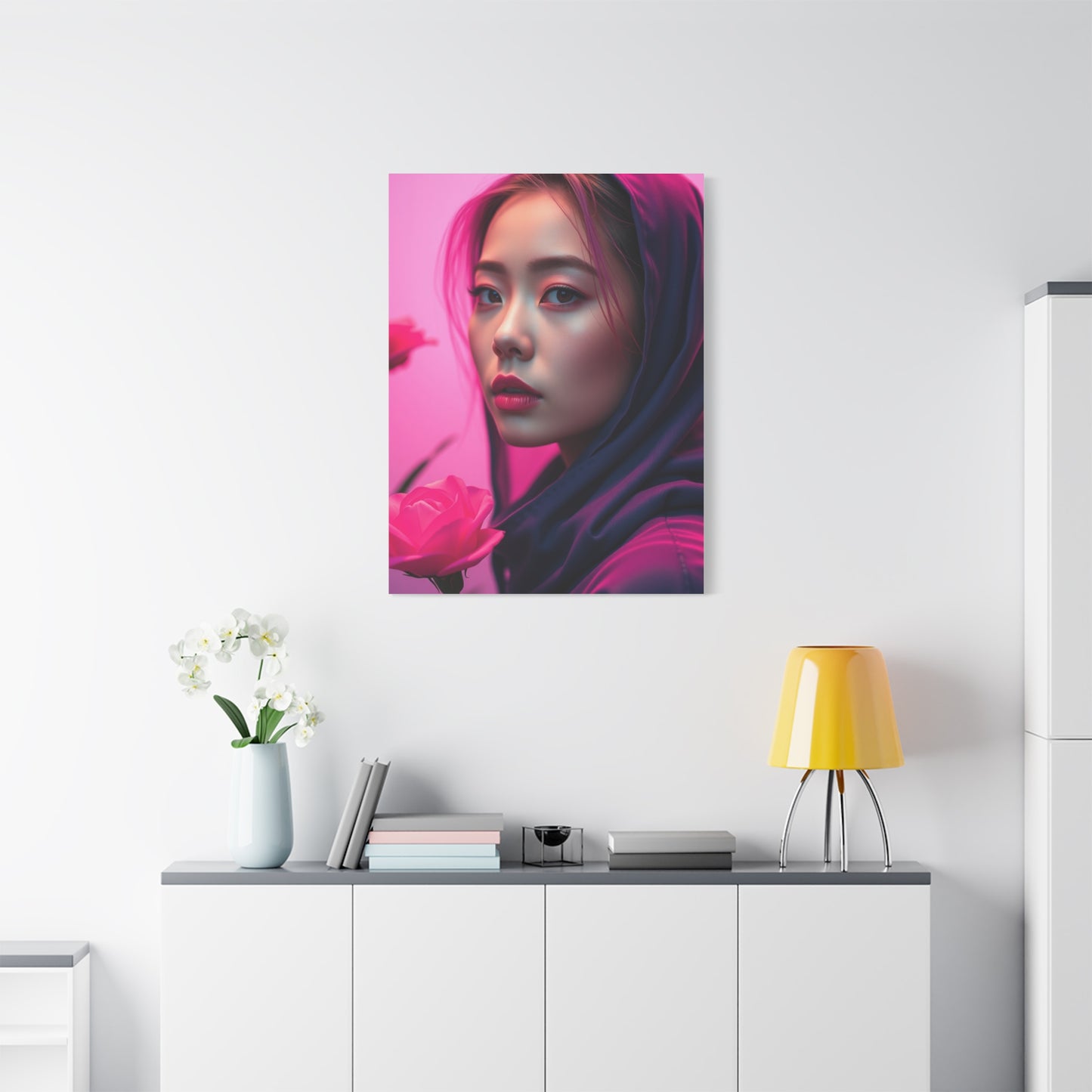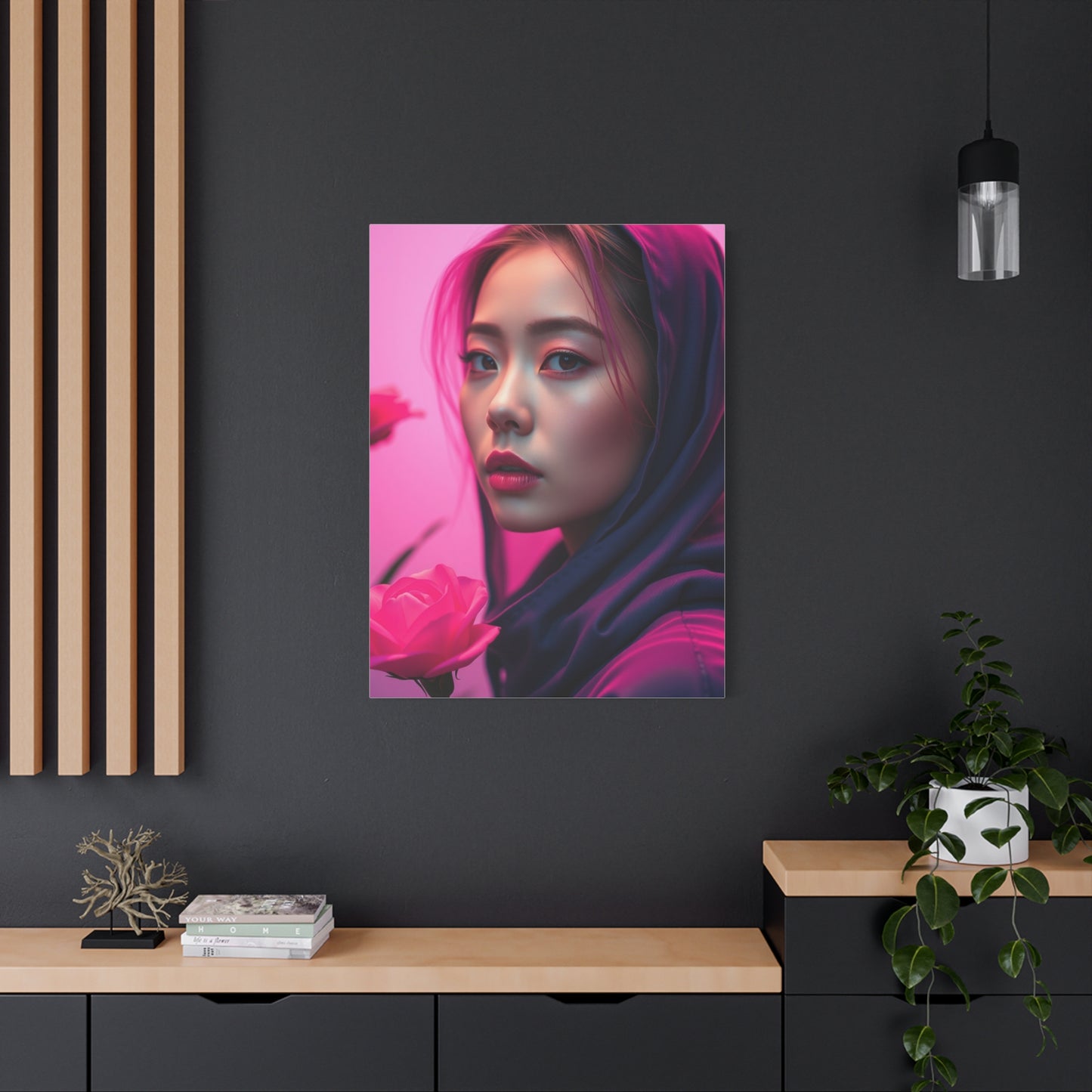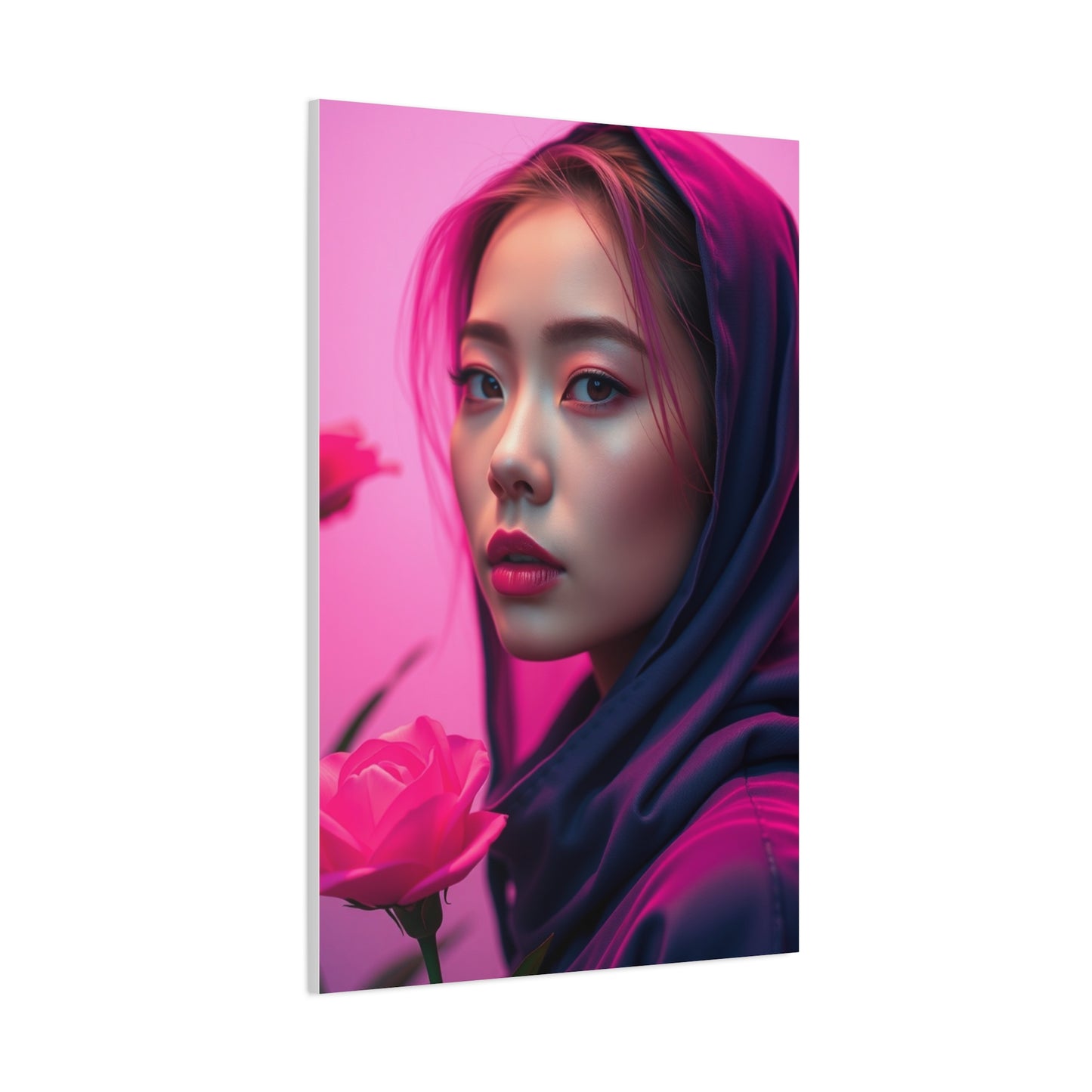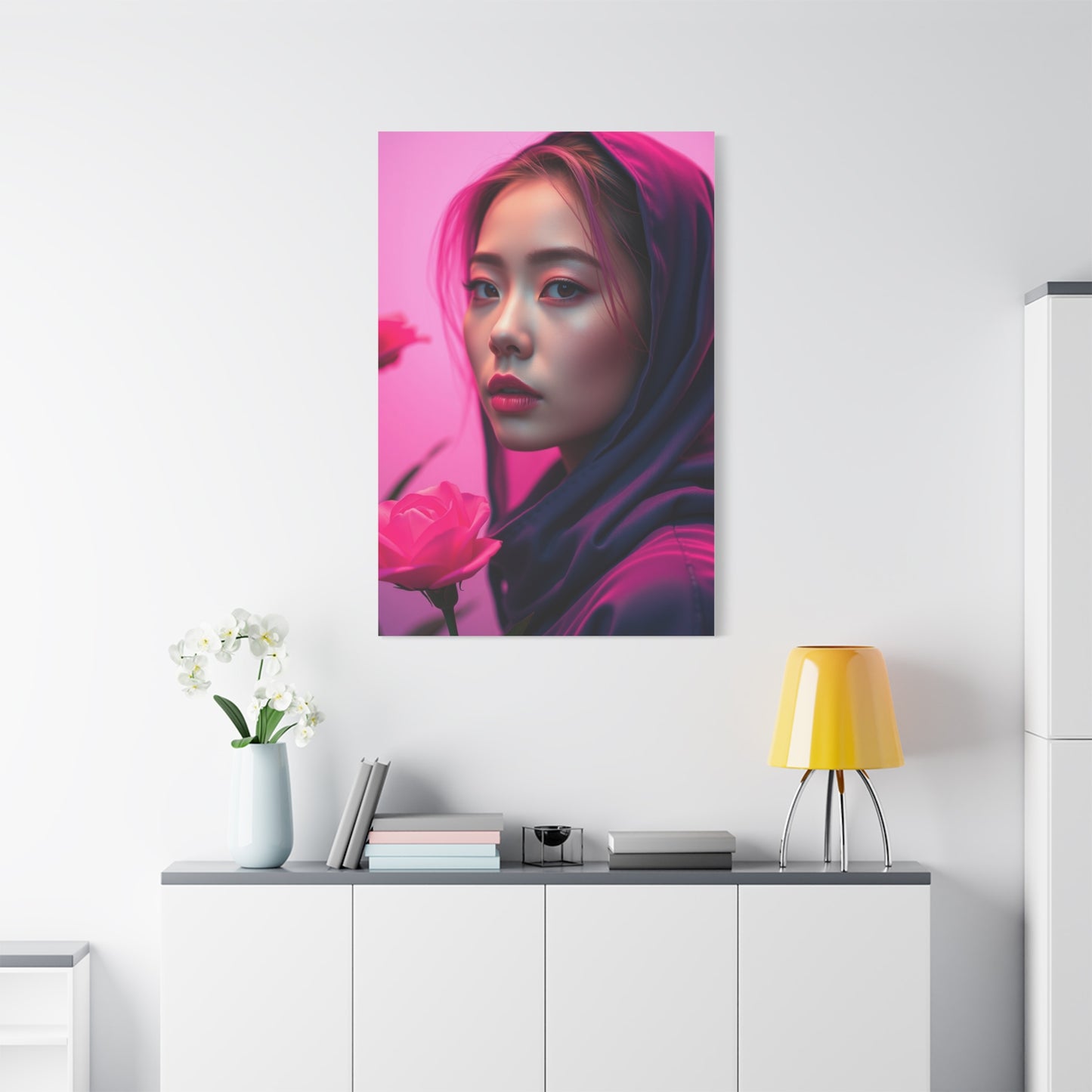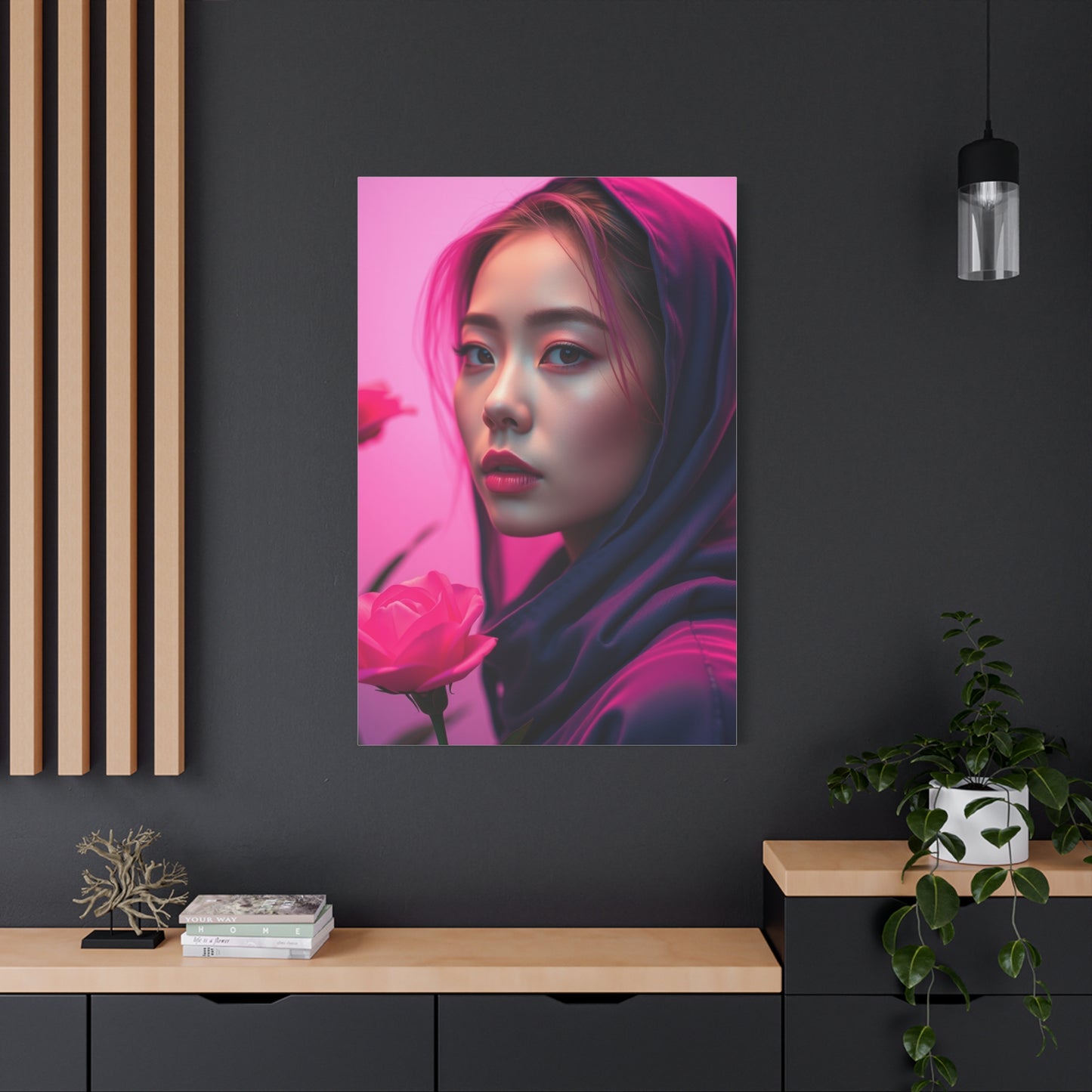Rose Reverie: The Complete Guide to Flower Canvas Masterpieces in Wall Art
The captivating allure of Rose Reverie represents a remarkable fusion of botanical beauty and contemporary artistic expression. This stunning collection of floral canvas artwork has captured the hearts of art enthusiasts and homeowners seeking to infuse their living environments with natural elegance and visual sophistication. The Rose Reverie collection stands as a testament to how traditional floral motifs can be reimagined through a modern artistic lens, creating pieces that resonate with diverse aesthetic preferences while maintaining timeless appeal.
Each canvas within the Rose Reverie collection tells its own unique story through carefully composed arrangements of roses that seem to dance across the fabric. The artistic approach employed in creating these masterpieces goes beyond simple botanical representation, instead focusing on capturing the essence and emotion that flowers evoke. The delicate petals, subtle gradations of color, and thoughtful composition work together to create artwork that feels both ethereal and grounded in natural beauty.
What sets Rose Reverie apart from conventional floral artwork is its ability to transcend traditional boundaries between realism and abstraction. The pieces maintain enough botanical accuracy to be recognizable as roses while incorporating artistic liberties that give each canvas a dreamlike quality. This balance makes the collection particularly versatile, allowing it to complement various decorating styles from contemporary to classic, from bohemian to sophisticated urban aesthetics.
The artistic vision behind Rose Reverie focuses on creating emotional connections through visual beauty. Each canvas serves as more than mere decoration; it becomes a focal point that draws the eye and invites contemplation. The thoughtful arrangement of floral elements creates movement and flow that guides the viewer's gaze across the composition, revealing new details and subtle nuances with each viewing. This depth of artistic consideration ensures that Rose Reverie pieces remain engaging long after their initial installation.
The creation process for Rose Reverie canvases involves meticulous attention to detail and a deep appreciation for the natural world. Artists working on these pieces study the intricate structures of roses, understanding how light plays across petals, how colors blend and transition, and how individual blooms relate to one another within larger arrangements. This thorough understanding of subject matter allows for artwork that feels authentic while maintaining artistic interpretation and creative freedom.
Rose Reverie has gained recognition for its ability to bring the serenity and beauty of gardens into any environment. Whether displayed in residential settings or commercial applications, these canvases create an immediate sense of tranquility and refined taste. The collection appeals to those who appreciate the natural world but seek to incorporate it into their surroundings through artistic rather than literal means, making it ideal for urban dwellers who crave connections to nature.
Colors in Rose Reverie Canvas Art
The color palette employed throughout the Rose Reverie collection represents one of its most distinctive and captivating features. The careful selection and application of hues create visual harmony while maintaining enough contrast to keep each piece engaging and dynamic. The predominant colors range from soft blush pinks to deeper rose tones, with occasional accents of cream, ivory, and subtle green undertones that reference foliage and stems. This cohesive yet varied approach to color ensures that each canvas maintains its individual character while belonging to a recognizable collection.
Soft pink tones dominate many Rose Reverie pieces, evoking feelings of romance, gentleness, and warmth. These delicate hues create an immediate sense of calm and comfort, making them particularly suitable for environments where relaxation and peace are priorities. The artists behind Rose Reverie understand the psychological impact of color, utilizing pink's associations with compassion, nurturing, and emotional warmth to create artwork that affects viewers on both conscious and subconscious levels. The various shades of pink employed range from barely-there blush tones to more saturated coral-tinged roses, providing enough variety to prevent monotony while maintaining overall cohesion.
Deeper rose and burgundy tones appear strategically throughout the collection, adding depth and sophistication to the overall compositions. These richer hues prevent the artwork from feeling overly sweet or saccharine, instead grounding the lighter tones with substance and visual weight. The interplay between light and dark rose tones creates natural shadows and highlights that give the floral subjects dimensional quality, making them appear to lift from the canvas surface. This tonal variation demonstrates the technical skill involved in creating Rose Reverie pieces and contributes significantly to their realistic yet artistic appearance.
Neutral tones play a crucial supporting role within the Rose Reverie color scheme. Creamy whites, soft ivories, and gentle beige tones provide breathing room within compositions, preventing visual overwhelm while highlighting the rose tones more effectively. These neutral elements often appear in background areas or as highlights on petals where light naturally falls, creating luminosity and freshness. The inclusion of neutral tones also enhances the versatility of Rose Reverie canvases, making them easier to coordinate with existing color schemes and furnishings.
Green accents, though often subtle, provide essential balance to the predominantly pink and rose palette. These touches of foliage color reference the natural context from which roses grow, grounding the floral subjects in botanical reality. The greens employed tend toward muted sage, soft olive, or desaturated forest tones rather than bright, vibrant greens, maintaining the dreamy, ethereal quality that characterizes the collection. These green elements also serve a practical purpose in coordinating Rose Reverie pieces with other natural materials and colors commonly found in home environments.
The application of color within Rose Reverie canvases demonstrates sophisticated understanding of color theory and harmony. Artists employ techniques such as color gradation, where hues transition smoothly from light to dark or from one tone to another, creating visual interest and movement. Complementary colors appear in subtle ways, with occasional hints of yellow or peach warming the overall pink palette, while tiny touches of cooler lavender or mauve add complexity. This nuanced approach to color creates artwork that rewards close examination while maintaining impact from a distance.
Metallic accents occasionally appear in certain Rose Reverie pieces, adding a touch of glamour and contemporary sophistication. These might include subtle gold or rose gold touches that catch light and add dimensional interest. The metallic elements are always applied with restraint, enhancing rather than overwhelming the primary floral subjects. This modern touch helps bridge the gap between traditional floral art and contemporary aesthetic preferences, making Rose Reverie suitable for more eclectic or transitional decorating approaches.
Decorating with Rose Reverie Prints
Incorporating Rose Reverie prints into your decorating scheme opens up numerous creative possibilities for enhancing your living environment. These versatile artworks adapt beautifully to various settings and decorating styles, serving as either bold focal points or subtle complementary elements depending on how they're displayed and what surrounds them. The key to successfully decorating with Rose Reverie lies in understanding both the inherent qualities of the artwork and the characteristics of the environment where it will be displayed.
When beginning to work with Rose Reverie prints, consider the existing color palette of your room as your starting point. These floral canvases work exceptionally well in environments with neutral foundations, where their soft pinks and rose tones can truly shine without competing with other strong colors. Rooms featuring whites, creams, beiges, soft grays, or gentle taupes provide ideal backdrops that allow Rose Reverie artwork to become the star of the visual composition. However, this doesn't mean these prints can't work in more colorful environments; careful consideration of complementary hues can create stunning results.
The scale of Rose Reverie prints you choose should correlate with both the size of your room and the visual impact you wish to achieve. In larger rooms with ample wall area, consider using substantial canvases or creating arrangements of multiple pieces that command attention and fill the visual field appropriately. Smaller rooms benefit from more modestly sized prints that enhance without overwhelming, maintaining the sense of proportion that makes a room feel comfortable and well-designed. Remember that leaving adequate breathing room around artwork is essential; overcrowding walls diminishes the impact of individual pieces.
Placement height significantly affects how Rose Reverie prints are perceived and enjoyed. The general guideline suggests hanging artwork so that its center sits at eye level, typically around fifty-seven to sixty inches from the floor. However, this can be adjusted based on the specific room and viewing context. In dining areas where people are usually seated, slightly lower placement might be more appropriate, while in hallways where people are walking, standard eye level works well. Consider the furniture arrangement as well; artwork hung above sofas or beds should relate proportionally to the furniture piece it accompanies.
Creating visual relationships between Rose Reverie prints and other room elements enhances overall cohesion. Look for opportunities to echo the artwork's colors in accessories like throw pillows, blankets, vases, or decorative objects. This doesn't mean everything should match perfectly; subtle color relationships create sophistication while exact matching can feel overly coordinated and contrived. The soft pinks and rose tones in the artwork might be reflected in a single accent pillow or a delicate vase holding fresh flowers, creating visual threads that tie the room together.
Lighting plays a crucial role in how Rose Reverie prints appear and how effectively they enhance your environment. Natural light brings out the true colors and subtle tonal variations in the artwork, making placement near windows advantageous when possible. However, be mindful of direct sunlight, which can fade canvas prints over time. Artificial lighting should be carefully considered as well; warm-toned bulbs enhance the pink and rose hues, while cooler lighting might make them appear less vibrant. Adding picture lights or track lighting specifically aimed at artwork can create dramatic effects while ensuring the pieces are properly showcased even in evening hours.
The architectural features of your room should inform how you work with Rose Reverie prints. In rooms with interesting architectural elements like exposed beams, built-in shelving, or distinctive molding, consider how the artwork relates to these features. Rose Reverie pieces can either complement architectural details by being placed in relation to them or can soften stark architectural elements with their organic, flowing forms. Rooms with minimal architectural interest benefit from the visual interest that these floral canvases provide, essentially creating focal points where none existed before.
Rose Reverie's Dreamy Floral Design
The distinctive design approach that characterizes Rose Reverie artwork creates its signature dreamy quality that sets these pieces apart from standard botanical art. This ethereal aesthetic results from deliberate artistic choices regarding composition, technique, and overall vision. Understanding what makes Rose Reverie designs so enchanting helps in appreciating these works and in selecting pieces that will best serve your aesthetic goals and enhance your personal environment.
The dreamy quality begins with the soft-focus approach employed in many Rose Reverie pieces. Rather than rendering every petal and leaf with photographic precision, artists working in this style opt for a slightly impressionistic treatment that suggests detail rather than explicitly defining it. This approach creates artwork that feels romantic and nostalgic, reminiscent of viewing flowers through gauzy curtains or in the soft light of early morning. The gentle blurring of edges and subtle blending of tones contribute to an overall sense of tranquility and peace that makes these canvases so appealing for residential settings.
Compositional flow represents another key element in Rose Reverie's dreamy design. The arrangement of floral elements guides the viewer's eye through the canvas in a natural, organic way that mirrors how one might wander through an actual garden. There's no rigid structure or overly formal arrangement; instead, blooms appear to float and cluster naturally, with spaces between them that allow visual breathing room. This thoughtful composition creates a sense of movement and life, as if a gentle breeze might rustle the petals at any moment.
The layering technique used in Rose Reverie designs adds to their dimensional, immersive quality. Foreground elements appear more defined and saturated, while background elements fade into softer focus and lighter tones, creating atmospheric depth. This artistic device mimics how human vision naturally works, where we focus sharply on nearby objects while peripheral elements remain less distinct. The result is artwork that feels three-dimensional despite existing on a flat canvas surface, drawing viewers into the scene rather than keeping them at a distance as observers.
Color transitions within Rose Reverie designs contribute significantly to their dreamlike character. Rather than abrupt changes between hues, colors flow and blend into one another through subtle gradations. A deep rose might gradually lighten to blush pink, which then transitions almost imperceptibly into cream or ivory. These gentle color shifts create harmony and cohesion while maintaining visual interest, preventing the eye from encountering jarring contrasts that would disrupt the peaceful, meditative quality of the artwork.
The selective use of detail represents a sophisticated design choice within Rose Reverie pieces. Not every element receives equal attention; instead, certain focal flowers might be rendered with more precision while surrounding blooms exist as softer suggestions. This hierarchy of detail creates natural focal points that anchor the composition while maintaining overall cohesion. It also demonstrates artistic restraint and confidence, recognizing that sometimes suggestion is more powerful than explicit rendering, allowing viewers' imaginations to participate in completing the scene.
Negative space, or the areas without floral elements, receives careful consideration in Rose Reverie designs. These quieter areas provide visual rest and prevent compositions from feeling cluttered or overwhelming. The background often features subtle tonal variations rather than flat, uniform color, adding interest without competing with the primary floral subjects. This sophisticated use of negative space demonstrates mature artistic sensibility and contributes to the collection's ability to work in diverse environments without visually dominating them.
The overall mood created by Rose Reverie's design approach tends toward the romantic and contemplative. These aren't energetic, vibrant florals demanding attention; rather, they invite quiet appreciation and create environments conducive to relaxation and reflection. This makes them particularly suitable for personal environments like bedrooms and reading nooks, though their beauty is certainly appropriate for more public areas as well. The dreamy quality offers an escape from the often harsh, overstimulating visual environment of modern life, providing a gentle alternative that soothes rather than excites.
Framing Tips for Rose Reverie Canvas
Selecting the right framing approach for your Rose Reverie canvas significantly impacts how the artwork appears and how well it integrates with your decorating scheme. While many canvas prints are designed to be displayed without traditional frames, having a gallery-wrapped edge that allows hanging as-is, adding a frame can enhance certain pieces and better suit particular aesthetic preferences. Understanding your framing options and their effects helps ensure your Rose Reverie artwork achieves its full visual potential.
Gallery wrap presentation, where the canvas continues around the edges of the stretcher bars, offers a clean, contemporary look that has gained popularity in recent years. This frameless approach allows the artwork to feel more integrated into the wall surface rather than sitting distinctly upon it. For Rose Reverie pieces, gallery wrapping works particularly well when the design extends to the edges or when the artwork will be part of a multiple-canvas arrangement. The lack of frame creates seamless flow between pieces and maintains focus on the artwork itself without additional visual elements competing for attention.
When choosing to frame Rose Reverie canvases, the frame style should complement rather than compete with the artwork's soft, romantic aesthetic. Simple frames in neutral colors tend to work best, providing structure and definition without overwhelming the delicate floral imagery. White frames create a fresh, gallery-like presentation that keeps attention on the artwork while providing clean boundaries. Natural wood frames in light oak, maple, or whitewashed finishes add warmth and organic texture that complements the botanical subject matter, creating cohesion between frame and image.
Frame width and profile affect the overall presentation and should be chosen with consideration for both the canvas size and the room context. Thinner frames provide subtle definition without adding significant visual weight, working well for smaller prints or in rooms where you want the artwork to feel light and airy. Wider frames make stronger statements and can help smaller canvases appear more substantial, though care should be taken not to let the frame overpower the artwork itself. The frame profile, whether flat, rounded, or ornate, should align with your overall decorating style; Rose Reverie's soft aesthetic generally pairs best with simpler profiles rather than heavily carved or embellished frames.
Matting represents another framing consideration, though it's more commonly used with paper prints than canvas. If you've chosen Rose Reverie artwork on paper rather than canvas, matting can provide beautiful presentation while protecting the print. Opt for wide mats in soft white, cream, or very pale pink that echo the artwork's color palette. The mat creates breathing room around the image, giving it prominence and preventing it from feeling cramped within the frame. Multiple-layer matting, with a thin inner mat in a soft color and wider outer mat in white or cream, adds sophistication and dimension.
The glazing or glass choice for framed Rose Reverie pieces requires consideration of both practical and aesthetic factors. Regular glass provides protection while remaining economical, though it can create glare that interferes with viewing depending on placement and lighting. Non-glare or anti-reflective glass eliminates this issue but typically costs more; for artwork in high-traffic areas or opposite windows, this investment often proves worthwhile. UV-protective glazing helps prevent fading over time, extending the life of your Rose Reverie artwork, making it particularly valuable for pieces displayed where sunlight exposure occurs.
Float mounting presents an elegant alternative framing approach that creates the illusion of the canvas floating within the frame, with a gap between the artwork edge and frame inner edge. This contemporary presentation technique works beautifully with Rose Reverie pieces, adding sophistication while maintaining the airy quality that characterizes the collection. The visible gap creates shadows and dimension that enhance the artwork's presence on the wall, making it feel like a precious object worthy of special presentation.
Hardware selection for hanging your framed Rose Reverie canvas deserves attention to ensure secure, level display. D-rings and wire on the frame back provide flexibility in positioning, while sawtooth hangers work well for lighter pieces. Consider professional picture-hanging hardware for larger or heavier framed canvases, ensuring they remain securely mounted. The hanging method affects how closely the frame sits against the wall; some mounting approaches create a small gap that casts shadows, adding dimension to the presentation.
Using Rose Reverie in Living Rooms
Living rooms serve as the heart of many homes, functioning as gathering places for family and friends while reflecting personal style and creating first impressions for guests. Incorporating Rose Reverie canvases into these important areas can dramatically enhance their aesthetic appeal while creating environments that feel welcoming, sophisticated, and thoughtfully designed. The versatile nature of Rose Reverie artwork makes it suitable for various living room styles and configurations, from formal sitting areas to casual family hangouts.
Positioning Rose Reverie artwork above the sofa represents one of the most common and effective living room placements. This prominent location makes the canvas an immediate focal point when entering the room, setting the aesthetic tone for the entire area. For standard-sized sofas, choose a canvas or canvas arrangement that spans roughly two-thirds to three-quarters of the sofa width, creating visual balance without extending so far that it appears disconnected from the furniture below. Hang the bottom edge of the frame approximately six to twelve inches above the sofa back, ensuring the artwork relates clearly to the furniture while maintaining comfortable viewing from seated positions.
Creating a gallery wall featuring Rose Reverie alongside complementary pieces offers a dynamic alternative to single large canvases. This approach works particularly well in living rooms with extensive wall area that might feel empty with just one piece. Combine multiple Rose Reverie prints in varying sizes with other artwork sharing similar color palettes or themes, arranging them in a balanced composition. The key to successful gallery walls lies in planning the arrangement before hanging anything; lay pieces on the floor or create paper templates on the wall to test various configurations until finding one that feels balanced and intentional.
Fireplace mantels provide natural focal points that pair beautifully with Rose Reverie artwork hung above them. The horizontal line of the mantel creates a foundation that grounds the artwork, while the fireplace itself draws attention upward toward the canvas. Consider the total height from floor to artwork top when hanging above mantels; the combined visual weight of mantel, any mantel decorations, and the artwork should feel proportional to the room size. Rose Reverie's soft aesthetic complements the warmth and gathering function of fireplaces, enhancing the cozy, intimate feeling that makes living rooms inviting.
Living rooms with limited wall availability due to windows, doorways, or built-in features can still accommodate Rose Reverie through strategic placement. The wall area adjacent to large windows often goes underutilized but provides excellent opportunities for artwork that doesn't need full-wall expanses. Smaller Rose Reverie canvases can transform these narrow vertical or horizontal areas into interesting visual moments. Similarly, the wall sections between windows can house artwork that creates rhythm and repetition across the room, tying disparate architectural elements together through consistent artistic theme.
Coordinating Rose Reverie artwork with living room furniture and accessories creates cohesive environments that feel intentionally designed. Pull accent colors from the canvas to inform throw pillow selections, choosing one or two pillows that echo the rose or pink tones without exactly matching them. This creates visual conversation between elements while maintaining sophistication. Similarly, decorative objects like vases, candles, or books with complementary colors can be arranged on coffee tables or shelving to reinforce the color story introduced by the artwork.
Lighting significantly affects how Rose Reverie artwork appears in living room settings and should be planned alongside artwork placement. Living rooms typically feature multiple lighting sources, including overhead fixtures, floor lamps, and table lamps, creating layered illumination that changes throughout the day. Position Rose Reverie canvases where they'll benefit from good lighting without being washed out or creating glare. Consider adding picture lights or adjustable track lighting specifically to illuminate the artwork during evening hours when natural light wanes, ensuring the pieces remain visual anchors regardless of time of day.
The style of your living room furnishings influences how Rose Reverie artwork integrates into the overall design. In traditionally decorated living rooms with classic furniture and formal arrangements, Rose Reverie's romantic aesthetic feels right at home, enhancing the refined atmosphere. Contemporary living rooms benefit from the organic softness that floral artwork introduces, preventing modern furnishings from feeling too stark or cold. Transitional living rooms, which blend traditional and contemporary elements, find perfect balance with Rose Reverie pieces that bridge these aesthetic approaches through their combination of classical subject matter and artistic interpretation.
Bedroom Ideas with Rose Reverie Art
Bedrooms represent personal sanctuaries where comfort, relaxation, and individual taste take precedence over public presentation. These intimate environments provide ideal settings for Rose Reverie artwork, whose soft colors and dreamy aesthetic naturally complement the restful atmosphere bedrooms should embody. Incorporating these floral canvases into bedroom design creates visually appealing environments that support relaxation and peaceful sleep while reflecting personal aesthetic preferences.
The most prominent bedroom placement for Rose Reverie art positions the canvas above the headboard, creating a clear focal point that grounds the entire room design. This placement draws the eye immediately upon entering the room while remaining visible from the bed itself, offering beautiful imagery to contemplate while relaxing or preparing for sleep. For this prominent position, select a canvas size that relates proportionally to the bed width; queen and king beds accommodate larger pieces, while full and twin beds pair better with medium-sized canvases. Leave adequate clearance between the headboard top and artwork bottom, typically six to ten inches, ensuring the piece appears intentionally placed rather than randomly positioned.
Rose Reverie artwork can define sleeping areas in open-concept layouts or large primary bedrooms with distinct zones. Hanging a canvas above the bed designates that area specifically for sleep, creating visual separation from dressing areas, sitting nooks, or other functions the room accommodates. This artistic definition of purpose helps the mind associate that area with rest, potentially supporting better sleep habits. The calming colors and gentle imagery of Rose Reverie pieces reinforce this restful association through their inherent tranquility.
Bedrooms with reading nooks or sitting areas benefit from additional Rose Reverie pieces that define these secondary zones. A smaller canvas hung in the reading corner adds visual interest to that area while maintaining thematic consistency with the primary artwork above the bed. This layered approach to artwork placement creates a more collected, personalized feeling that makes bedrooms feel truly customized to the occupant's preferences rather than generically decorated.
Color coordination between Rose Reverie artwork and bedroom textiles creates harmonious environments that feel cohesive and intentional. The soft pinks and rose tones in the artwork can inform bedding choices, though exact matching should be avoided in favor of complementary coordination. Consider duvet covers, sheets, or quilts in cream, soft gray, or very pale blush that echo but don't replicate the artwork colors. Throw pillows offer opportunities for closer color relationships, with one or two pillows picking up the rose tones more directly while others maintain neutral territory. Window treatments in soft, flowing fabrics continue the romantic aesthetic that Rose Reverie establishes.
Nightstand styling presents opportunities to create visual relationships with Rose Reverie artwork hung nearby. Small decorative objects in complementary colors or with floral motifs reinforce the artistic theme without becoming redundant. A small vase with fresh or dried flowers echoes the canvas subject matter in three dimensions, creating a connection between art and life. Books with covers featuring complementary colors, elegant lamps with soft fabric shades, or delicate decorative boxes can all contribute to a cohesive nightstand presentation that relates to the artwork above the bed.
Bedroom lighting should be planned to showcase Rose Reverie artwork while serving the room's functional needs. Soft, warm lighting enhances the pink and rose tones in the artwork, making them appear more inviting and rich. Avoid harsh, cool-toned lighting that might wash out the delicate colors or create an atmosphere at odds with the artwork's gentle nature. Dimmer switches allow adjustment of lighting intensity for different activities and times of day, ensuring the artwork can be appreciated when desired while supporting total darkness for optimal sleep when needed.
The overall mood created by Rose Reverie in bedroom settings tends toward the romantic and serene, making these pieces particularly appropriate for primary bedrooms designed for couples. The soft, feminine aesthetic appeals to many people while remaining sophisticated enough to avoid feeling overly gendered or juvenile. For bedrooms with more masculine or neutral design directions, selecting Rose Reverie pieces with more muted tones or combined with other artwork in darker or more neutral colors can create balance that honors all occupants' preferences.
Guest bedroom decoration benefits tremendously from Rose Reverie artwork that creates welcoming, hotel-like environments for visitors. These pieces communicate care and attention to detail while remaining broadly appealing to diverse guests. The neutral-leaning color palette works with various complexions and personal preferences, while the quality and sophistication of the artwork makes guests feel valued and comfortable. Pairing Rose Reverie pieces with quality bedding and thoughtful amenities creates guest rooms that encourage return visits and positive impressions.
Caring for Rose Reverie Canvas Prints
Proper maintenance and care of Rose Reverie canvas prints ensures they remain beautiful and vibrant for years, protecting your investment while preserving the artwork's aesthetic impact. Canvas prints require different care approaches than traditional framed artwork behind glass, as the canvas surface is more exposed to environmental factors. Understanding correct care techniques helps prevent common issues that can diminish canvas artwork over time while maintaining the pieces in optimal condition.
Regular dusting represents the most fundamental care practice for Rose Reverie canvases and should be incorporated into routine cleaning schedules. Dust accumulation can dull the appearance of canvas prints, settling into the texture of the material and obscuring colors and details. Use a soft, dry microfiber cloth or a clean, soft paintbrush to gently remove dust from the canvas surface, working in light strokes that follow the direction of the canvas weave. Avoid pressing hard against the canvas, as excessive pressure can damage the printed surface or distort the canvas shape. For particularly delicate cleaning, a soft makeup brush or clean feather duster works well, providing gentle dust removal without risk of snagging or damage.
Environmental conditions significantly impact canvas longevity, making placement decisions important for preservation. Direct sunlight represents one of the primary threats to canvas artwork, causing colors to fade over time through UV exposure. Position Rose Reverie canvases away from windows where direct sun hits, or use UV-protective window film if sunny placement is unavoidable. Even indirect natural light can cause gradual fading over many years, particularly for pieces displayed in very bright rooms. Rotating canvas positions periodically can ensure even exposure, preventing certain pieces from bearing the brunt of light exposure while others remain pristine.
Humidity control matters for canvas preservation, as excessive moisture can lead to mold growth, while extremely dry conditions can cause canvas to become brittle and crack. Maintain indoor humidity levels between thirty and fifty percent, which supports both human comfort and artwork preservation. Avoid hanging Rose Reverie canvases in bathrooms or other high-humidity environments unless you can ensure adequate ventilation and humidity control. Similarly, avoid placement directly above heat sources like radiators or heat vents, as the combination of heat and dry air can damage canvas materials over time.
Cleaning beyond dusting should be approached cautiously, as canvas surfaces can be easily damaged by moisture or cleaning solutions. If your Rose Reverie canvas accumulates sticky residue or stains, address them promptly but carefully. Never spray water or cleaning solutions directly onto canvas; instead, very slightly dampen a clean white cloth with distilled water and gently blot the affected area, working from the outside of the stain toward the center to prevent spreading. Allow the area to air dry completely before returning the canvas to its display position. For more serious cleaning needs, consult professional art restoration services rather than attempting DIY solutions that might cause irreversible damage.
Physical protection of Rose Reverie canvases includes careful handling and awareness of placement risks. Always hold canvases by their frames or stretcher bars rather than touching the printed surface, as oils from hands can gradually damage the print. When moving or adjusting canvases, work carefully to avoid banging them against walls, furniture, or doorframes, which can dent or tear the material. If you need to store canvases temporarily, wrap them in acid-free paper or clean cotton sheets, never plastic, which can trap moisture. Store wrapped canvases in stable environments with good airflow, positioned flat or upright but never leaning at angles that could cause warping.
Temperature stability contributes to canvas longevity, with consistent temperatures being preferable to frequent fluctuations. Avoid hanging Rose Reverie artwork where temperature swings occur regularly, such as near exterior doors, in uninsulated rooms, or near fireplaces or air conditioning units that create immediate temperature zones. Stable temperatures between sixty-five and seventy-five degrees Fahrenheit provide ideal conditions for canvas preservation, preventing the expansion and contraction that temperature changes cause in canvas materials.
Periodic inspection of your Rose Reverie canvases allows early detection of potential problems before they become serious. Every few months, examine each canvas for signs of warping, sagging, loosening from stretcher bars, or any surface damage. Check that hanging hardware remains secure and that the canvas hangs level and true. Address any issues promptly; canvases that have sagged slightly can sometimes be tightened by adjusting the wooden keys inserted into the stretcher bar corners, though this should be done carefully to avoid over-tightening that can distort the image. For more serious structural issues, consult professional framers who can restretch or restore canvases to proper condition.
Protective treatments can enhance canvas longevity, though they should be applied carefully. Some canvas prints come pre-treated with UV-protective coatings or archival-quality sealants. If your Rose Reverie canvases lack these protective layers and you're concerned about their longevity, consult professional art services about appropriate treatments. Never apply household protective sprays or sealants to canvas artwork, as these can cause discoloration, surface texture changes, or chemical damage that ruins the piece.
Modern Environments and Rose Reverie Art
Contemporary and modern environments might seem unlikely settings for floral artwork, given their frequent emphasis on minimalism, clean lines, and sometimes industrial aesthetics. However, Rose Reverie pieces can integrate beautifully into modern settings, providing crucial organic softness that prevents these environments from feeling cold or sterile. The key lies in understanding how to bridge the apparent gap between Rose Reverie's romantic aesthetic and modern design principles, creating spaces that honor both approaches while achieving visual harmony.
The color palette of Rose Reverie artwork offers a natural entry point for modern environments, many of which rely on neutral foundations punctuated by carefully selected accent colors. The soft pinks and rose tones of these canvases can serve as sophisticated accent colors in rooms dominated by whites, grays, blacks, or natural wood tones. This approach maintains the clean, uncluttered feeling that modern design values while introducing warmth and visual interest through the artwork. Select Rose Reverie pieces with more muted tones for the most seamless integration, avoiding pieces with very saturated or bright colors that might clash with modern sensibilities.
Architectural features common in modern environments, such as exposed concrete, metal surfaces, glass walls, or minimalist window treatments, benefit from the softening influence Rose Reverie artwork provides. The organic curves and flowing forms of floral imagery offer visual relief from the geometric precision and hard materials that characterize modern architecture. This juxtaposition creates balance and prevents modern rooms from feeling too austere or unwelcoming. A single large Rose Reverie canvas on an exposed concrete wall, for example, creates dramatic contrast that highlights both the rugged architectural feature and the delicate artwork.
Furniture selection in modern environments tends toward pieces with clean lines, minimal ornamentation, and often geometric shapes. Rose Reverie artwork provides organic counterpoint to these angular forms, introducing curves and natural shapes that create visual variety. Imagine a sleek, low-profile sofa in charcoal gray with crisp rectangular cushions; hanging a Rose Reverie canvas above this furniture piece creates immediate contrast that makes both elements more interesting. The juxtaposition highlights the artwork's romantic softness while making the furniture's geometric precision more apparent and appreciated.
Scale and negative space, both important principles in modern design, align well with how Rose Reverie artwork should be displayed. Modern environments often feature ample empty wall area, understanding that open space contributes to the clean, uncluttered aesthetic. Rose Reverie pieces displayed with generous breathing room around them honor this principle while serving as carefully chosen focal points within the expanse. Rather than clustering multiple pieces or surrounding the artwork with many accessories, allow it to stand alone with adequate space, creating moments of visual interest within otherwise minimal walls.
The gallery-wrapped presentation common with Rose Reverie canvases suits modern aesthetics particularly well. The frameless edges and the way canvas-wrapped artwork seems to float on the wall aligns with modern preferences for streamlined presentation. This approach avoids the traditional frame associations that might feel too ornate or classical for modern environments. If you prefer framed presentation in modern settings, opt for the simplest frames possible in materials like brushed metal, thin black metal, or very simple wood profiles without decorative elements.
Modern environments often incorporate technology prominently, with visible televisions, sound systems, and smart home devices. Rose Reverie artwork can help balance these technological elements, providing organic, handcrafted counterpoints to digital displays and electronic equipment. Consider placing Rose Reverie canvases on walls opposite media walls or technology centers, creating visual destinations that offer relief from screens and electronic stimulation. This balance supports the increasingly important goal of creating homes that honor both technological convenience and human needs for natural beauty and organic elements.
Lighting in modern environments tends toward recessed fixtures, track lighting, and architectural lighting solutions that minimize visible hardware while maximizing functionality. These lighting approaches can beautifully showcase Rose Reverie artwork when planned thoughtfully. Adjustable track lighting allows precise aiming to illuminate canvases without creating glare or hot spots. Recessed lighting with directional trim can be positioned to graze walls and highlight artwork. The key is ensuring adequate illumination without over-lighting, maintaining the subtle, sophisticated atmosphere that both modern design and Rose Reverie artwork favor.
Open floor plans common in modern architecture create opportunities for using Rose Reverie artwork to define zones without erecting physical barriers. A large canvas positioned on the wall behind a sofa grouping visually anchors that seating area, distinguishing it from dining or other functions that share the open area. This artistic definition maintains the flowing, open feeling that modern floor plans provide while creating enough distinction for each area to feel purposeful and defined.
Rose Reverie for Cozy Corners
Cozy corners represent some of the most personal and cherished areas within homes, serving as retreats for reading, reflection, creative pursuits, or simple relaxation. These intimate areas benefit tremendously from thoughtful decoration that enhances their comfort and appeal. Rose Reverie artwork provides ideal enhancement for cozy corners, where its gentle colors and dreamy aesthetic support the restful, private atmosphere these niches should embody. Understanding how to incorporate these pieces into smaller, more intimate settings ensures they contribute.
Final Thoughts:
Flower canvas masterpieces, especially those featuring roses, hold a timeless appeal that transcends fleeting design trends. Roses symbolize beauty, love, and elegance, making them the perfect motif for wall art that not only decorates a space but also evokes deep emotion. As we conclude this guide, it’s clear that incorporating rose-themed canvas art into your home is an inspired choice that brings both aesthetic and sentimental value.
One of the greatest strengths of flower canvas art lies in its versatility. Whether your style is modern minimalism, classic elegance, or bohemian charm, rose canvases can be adapted to suit any environment. Their vivid colors, soft gradients, and intricate details offer a stunning focal point that can anchor a room or complement existing décor. From large-scale statement pieces to smaller accent canvases, there’s a rose artwork for every space and mood.
Beyond mere decoration, rose canvas art invites a sensory experience. The textures of the brush strokes, the layering of colors, and the interplay of light and shadow bring depth and dimension to flat walls. This makes the artwork not just something to look at, but something to feel—creating an intimate connection between the viewer and the art. This tactile quality enriches the ambiance and invites repeated appreciation.
When selecting rose canvas art, consider the story you want to tell. Each painting captures a different moment—a blooming rosebud, a fully opened blossom, or a wilting petal—each symbolizing different phases of life, emotion, and growth. This narrative element personalizes your space, making it a reflection of your own journey and values.
Placement is key to maximizing the impact of your rose canvas. Position it where natural light enhances its colors or where it naturally draws the eye, such as above a sofa, in a hallway, or as a centerpiece in a bedroom. Pairing the canvas with complementary décor, like soft linens, wooden accents, or metallic details, will highlight the artwork’s beauty while creating a harmonious environment.
Ultimately, rose flower canvas art does more than beautify—it inspires. It encourages mindfulness, invites calm, and offers a daily reminder of nature’s elegance and resilience. When thoughtfully integrated into your home, these masterpieces transform ordinary walls into meaningful galleries.In embracing rose canvas art, you’re not only investing in decoration but also in an enduring symbol of grace and passion. Let your walls bloom with these floral masterpieces, and let your space become a true reflection of your reverie.


















